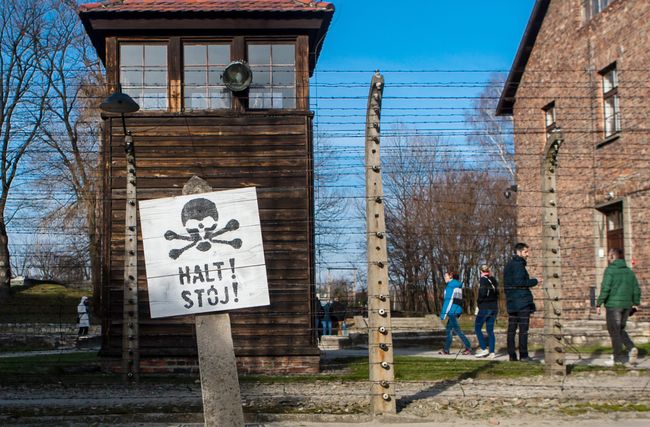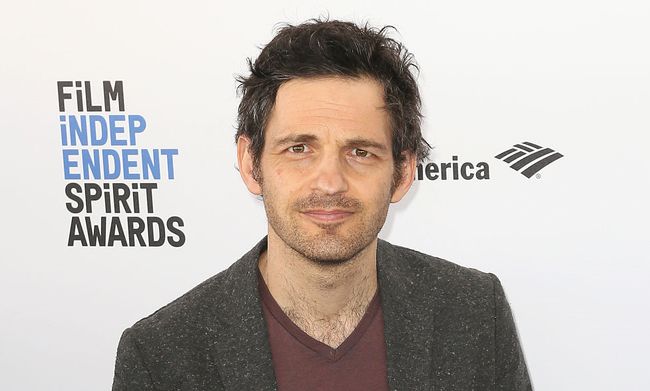Number 7005. Antigone’s smile
In Kyiv with the support of the Molodist Festival the drama Son of Saul, which won this year’s Oscar as best foreign film, premiers in Kyiv
“For example, the concentration camps. The only truthful film which has never been shot and will hardly be shot, because it will be unbearable, is the film about a concentration camp from the view of the executioners and their everyday duties. How to put a two-meter long human body into a 50-cm coffin? How to take away a ton of arms and legs in a wagon meant for three tons? How to burn down a hundred of women, if the gasoline is enough only for ten? It would be worthwhile to show the typists who register all that. And not the horror of these scenes would be unbearable, but, vice versa, their absolutely normal human aspect.”
Jean-Luc Godard, a genius and provocateur of the world cinema, wrote this over 50 years ago. Past year Hungarian director Laszlo Nemes made a decent attempt to implement Godard’s idea by shooting a feature film Son of Saul. But, of course, it was not its provocativeness that gained the 39-year-old debutant the Cannes Grand-Prix, a Golden Globe, and Oscar.
The film’s protagonist is not an executioner, but their unwilling assistant, a member of a Sonderkommando, a group of prisoners who take other prisoners to gas chambers, sort their stuff, remove the bodies, and fulfill almost all the casual work in the camp.
We know nothing about the past of this person and his family, just that his name is Saul, he was born in Uzhhorod, and his number was 7005. He introduces himself under the surname of Auslander, which is translated from Hebrew and German as a “foreigner”; but in the camp everyone is a foreigner, a stranger. It is hard to reveal any feelings on his face which is disfigured by exhaustion and herpes, but this is standoffishness of an abyss: actor Geza Roehrig makes it emotionally visible.
Saul’s world is reduced to the distance of touch, routine duties and needs. That is why almost the whole film is shot up close, against blurred background. The first scene is not clear at all, the hero enters it, and Matyas Erdely’s camera follows him closely, creating a violent dynamics, which practically squeezes the viewer into the chair (it should be noted that technically it is difficult to do, because the film was shot on a 35mm format film with a heavy camera, which weighs several tens kilos). All the performers show psychological and character accuracy; the faces, like the color plasticity of the scene, have a visual equivalent on the canvases of expressionists: the horror and the scale of what is shown on the screen can be shown namely in this way. In the soundtrack practically every sound supplements the general atmosphere with necessary accents: the unbearably low chugging of a steam train, orders pronounced harshly like dogs’ barking, the increasing wave of crying and shouts through the closed doors of the chamber, the drumming of fire in the furnaces create a dreadful symphony of destruction.
For Saul the fatal fussing stops when a still alive teenager is taken out of a gas chamber. The boy lives for only several more minutes, till an SS officer nearly beats him up to death. But this is enough to change everything in Saul and his world. Suddenly a goal, besides struggle for survival, appears in the life of the hero: he wants to bury the child decently, for which he even looks for a Rabbi, risking his own life. This is a very human desire, at least for the fact that animals don’t bury their dead, but there is more to that. In the place where the killed people are called “pieces,” where thousands of old and young people are burnt down and scattered in the wind, this intention is an exclusive challenge. Surviving in a gas chamber is a miracle. The miracle of life – this is what Saul wants to save, albeit in a symbolical way. That is why he realizes the funeral and calls the boy his son. Human life is beyond physics, it’s metaphysical, and namely this metaphysics denies the hell perpetrated by Nazis.
Of course, the plot is an allusion to the antique myth of Antigone who buried the body of her brother in spite of the tyrant’s ban. This is an archetypical story, which is repeated again and again, that life and human dignity are asserted through death. It does not matter whether the protagonist will manage to bury the child according to all rituals. He won by tearing it from the chamber conveyer.
That is why the only final smile in the film belongs to Saul. Antigone’s smile.

“WE WANTED TO MAKE A FILM AS CLOSE TO REALITY AS POSSIBLE”
Geza ROEHRIG (11.05.1967, Budapest, currently New York) is a Hungarian writer and actor. Saul is his first big role. After the Kyiv premiere he talked to the audience and gave an exclusive interview to The Day.
***
As a former rock music journalist I took interest in one detail from your youth: during the Communist rule in Hungary you performed in a band whose concerts were forbidden. Could you please tell something more about it?
“At that time 150,000 Soviet soldiers were stationed in Hungary. I don’t like politics, but I was turned out of a gymnasium out of political reasons, because I had never recognized the fact that there should be only one party. So, I painted my hair blue, created a punk band, we rehearsed and played in different places and under different titles – because the police would always cut the electricity, or sabotaged our concerts in some other way.”
What was your impetus to become an actor?
“I didn’t look for that. The director found me.”
But Saul is not your first role.
“I played my first role at the age of 21, which followed by a break till the age of 47, so I can say I started from scratch. But I had known Nemes before.”
Why did he turn to you?
“He was looking for a face which was not easily recognizable.”
As a writer, you’re your own boss, but you have to follow instructions as an actor. How do you solve this collision?
“In fact, this could have created some problems, be it not for the film. But in Son of Saul the hero is already practically deprived of emotions, because he performs terrible monotonous work, like a robot. I had simply to arrive at the character, but at the same time to avoid emotional coloring.”
It sounds like a serious challenge for an actor.
“I agree that this is a difficult task.”
Who were the members of Sonderkommando?
“Those were supposed to be men in good physical shape aged between 20 and 40. They were living separately. They didn’t volunteer to work in Sonderkommando, they were fooled: they were taken to the camp for a long time without food, like cattle, and asked whether they would like to live in better conditions. Many of them raised their hands. Someone wasn’t asked at all. They didn’t know till the last moment what they would be doing.”
What kind of work was that?
“Helping the new prisoners undress before the gas chamber, without saying a word to them. Then they had to cut women’s hair, look whether the prisoners had any gold teeth, look for any precious things left on the bodies. Later they had to remove and burn down the bodies, and clean the gas chamber to make the next group believe that it was a shower room. To do such work, you had to cover your heart under armor. Not everyone succeeded in this, that is why most of them tried to commit a suicide, but it was practically impossible to do in the camp. There is a recorded incident when one of such self-killers was pushed out of the gas chamber to testify what was happening there. On the whole, many Sonderkommando members considered that as their mission, and even secretly recorded everything.”
Did you get someone’s consultation?
“A Greek Jew, a former Sonderkommando, who is now 93. He shared many memories with me. Namely this contact helped me to play the role.”
What was the work on the film like?
“We shot only for 28 days out of intended 40, with very low budget, but this had a favorable effect on the result. Usually the cut of a feature film includes 200-300 scenes, we had nearly 70, so it took 1-1.5 minutes to shoot one scene, so we had to do a very good choreography of every scene, like in a ballet, to stay within the allotted time. But, of course, our feeling of this story was the hardest.”
Why did you take up this role?
“I believed in the script. I have seen many films about the World War Two, generally about the wars that I find untruthful, even kitsch films. And Nemes wanted to impress the audience, but not for pushing for tears, but to make the audience shudder deep in their souls, so that everyone really heard the messages brought by Son of Saul. We wanted to create a film as close to reality as possible.”
Is Schindler’s List on the list of the untruthful films you’ve mentioned?
“You see, this is not the story I heard from my grandfather: 43 members of his family were killed during the Holocaust. Schindler’s Lust starts as a colored film, then turns into a black-and-white one, and then becomes a colored film again. Why do Germans and Americans like it? Because the authors give hope, create an emotional connection between the audience and famous actors, whose heroes of course must escape. I don’t believe in this. Survival was accidental.”
What films do you like?
“I could have named other pictures, but if there had been a close hit, we wouldn’t shoot Son of Saul.”
How did this role change you?
“It didn’t. It’s not because I was insensitive, but this subject has been present in my life, with two out of my eight books being about Oswiecim.”
How did the visit to Oswiecim affect you?
“I lost my faith in humans. A kind of vacuum emerged in my life. I understood that I couldn’t live without faith.”
Finally the question that arises in such cases: in your opinion, why was the Holocaust possible?
“On the same reasons as GULAG. We lost connection with God. Not church, religion, but God.”
Newspaper output №:
№23, (2016)Section
Culture





